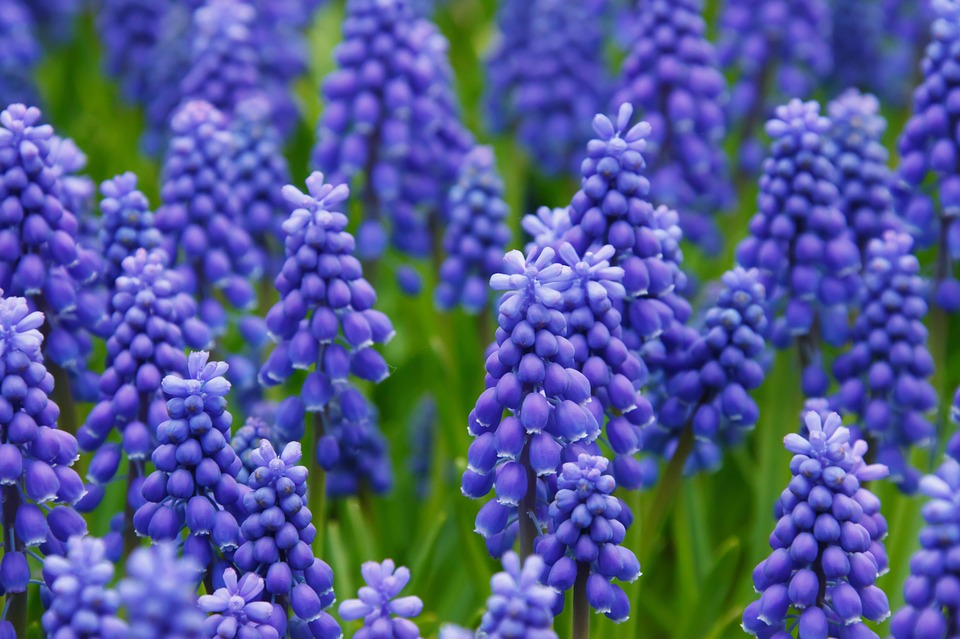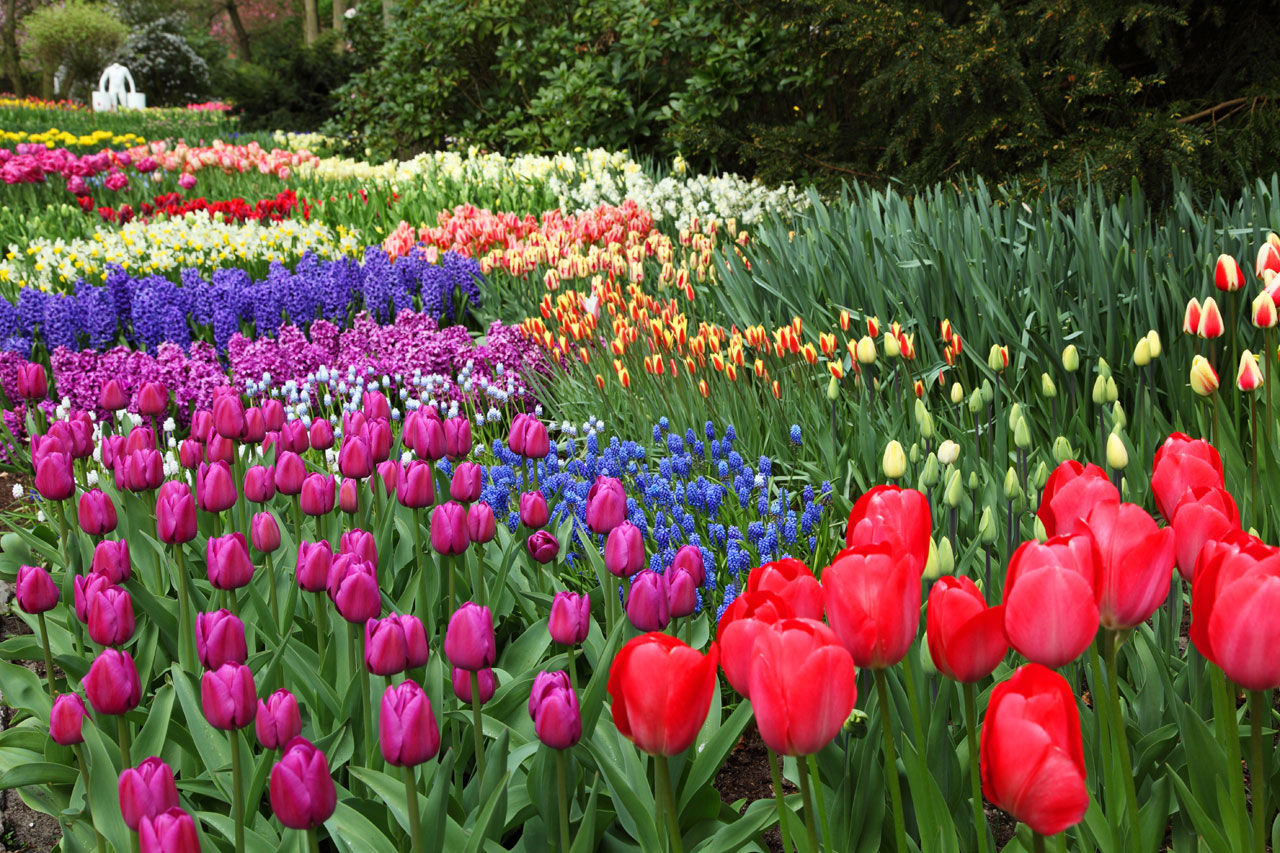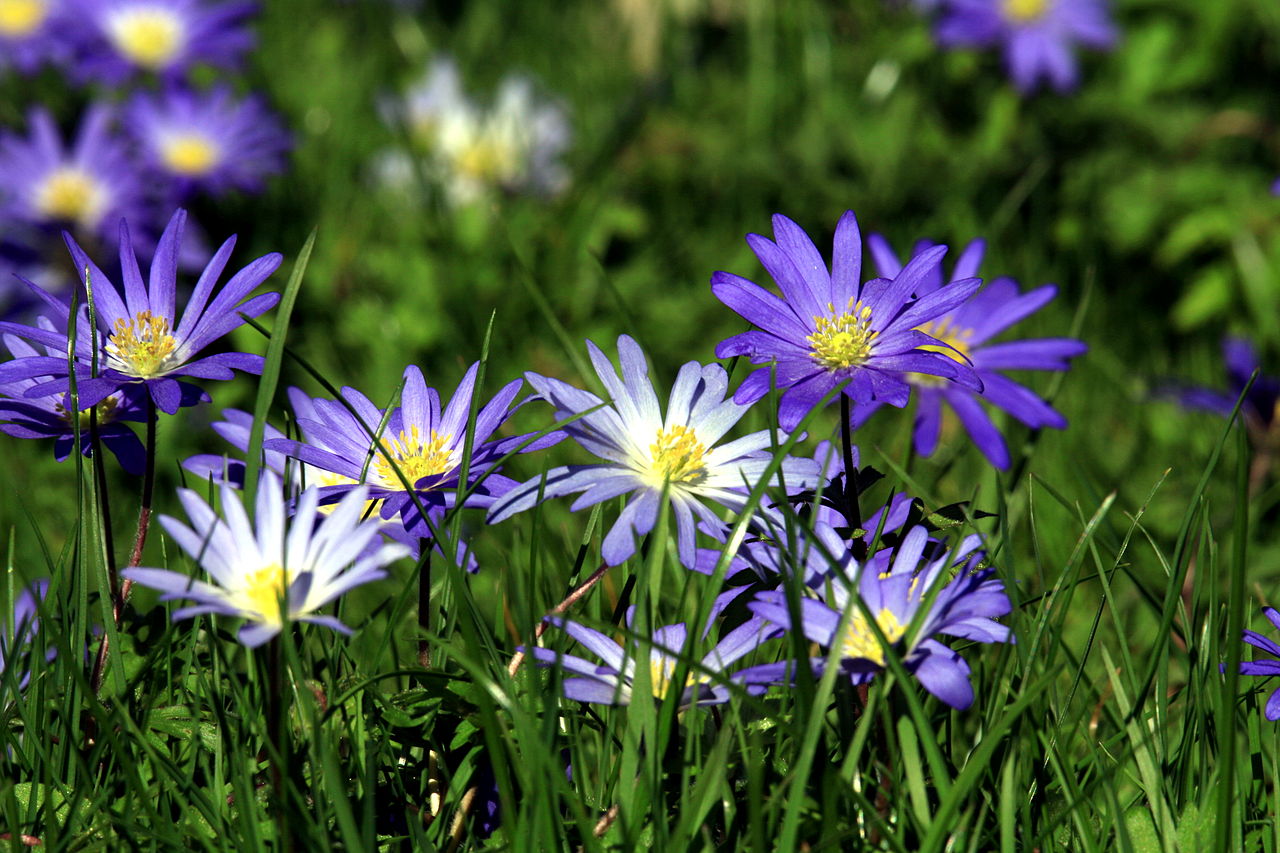- Home
- About
- Visiting Us
- AylettPlus
- Online Shop
- Our Range
- Plant Finder
- Seasons Café
- Events
- News
- Sustainability
- Contact Us
01727 822255
info@aylettnurseries.co.uk
Bulbs – Spring Flowering
the buried treasures in your garden…
Jewel-like Crocus, Dancing Daffodils, stunning tulips, delicate Fritillaria meleagris, Elegant Lily of the Valley, Fragrant Hyacinths, Golden Winter Aconite, Magnificent Alliums and magical bluebells…
Bulbs offer a wealth of colour, form and structure to the garden. Many bulbs are fragrant and others leave attractive seed heads at the end of their flowering season. Versatile and easy to grow, the vast range of bulbs available provides flowers from across the colour spectrum for every month of the year.
Whether you carefully plan your planting to create a spectacular vision or less strategically scatter some of your favourites for a surprise appearance, as the seasons change, watch your garden come to life with the colour and interest bulbs have to offer!
Bulbs can be used in containers, baskets, borders, and for naturalising in grass, under trees or in wildflower meadows, giving interest in areas of the garden that otherwise may not bloom, some can even be planted indoors for a Christmas display! The beauty of bulbs, besides their versatility and visual beauty, is that many favourites are perennials, offering many years of enjoyment, when you consider this, they also prove a good value investment for your garden!
What are Bulbs?
Bulb is a general term used by gardeners for plants with a food storage organ that allows them to grow and flower once the optimum conditions occur.
Spring, Summer, Autumn, Winter – Bulbs can provide colour and interest during every season…
Spring Flowering
Flower: Feb-April/May
When to Plant: Autumn – for best results plant spring flowering bulbs in September (Tulips can be planted as late as November)
Examples: Narcissi, Tulip, Alliums, Bluebells
Summer Flowering
Flower: mid-June onwards
When to Plant: Generally speaking Summer Flowering bulbs are tender and should be planted after frosts have passed in spring
Examples: Allium, Lily, Gladioli
Autumn Flowering
Flower: August onwards
When to Plant: Summer – plant in August for flower shortly after – foliage will follow in summer (August)
Examples: Amaryllis, Autumn Crocus, Colchicum, Dahlia, Eucomis
Winter Flowering
Outdoor Examples: Snowdrops, Winter Aconites (Eranthis), Cyclamen Coum
Indoor Examples: Prepared Hyacinths, Prepared Narcissus
With such a wide variety of bulbs to choose from we have selected some of our most popular choices:
 SNOWDROPS
SNOWDROPS
The first of the Spring Bulbs and always a delight!
 CROCUS
CROCUS
Starting with the species types such as Ruby Giant and Prins Claus through to the large flowering types, these bulbs will spread if left undisturbed.
 NARCISSUS (DAFFODILS)
NARCISSUS (DAFFODILS)
With such a wide variety to choose from it is now possible to have daffodils in flower for 6 months of the year. The Dwarf variety Tete a Tete is popular because of its suitability for every situation and long flowering period. Dutch Master (yellow trumpet) and Camelot (late yellow trumpet) are popular choices.
 MUSCARI (GRAPE HYACINTHS)
MUSCARI (GRAPE HYACINTHS)
A very vigorous bulb, the blue contrasts well when planted with the golden daffodils.
 HYACINTHS
HYACINTHS
Popular for their scent and also for the strong blue and soft pink colour.
 TULIPS
TULIPS
Remember with tulips size counts, the larger the bulb the larger the flower. Some of our favourites are Peach Blossom and Angelique, Black Parrot and Flaming Parrot. Then there are the lily flowered varieties such as Madeleire and Dolls Minuet.
 ANEMONE BLANDA
ANEMONE BLANDA
Vigorous self-seeding corms that will go on for years with very little attention. Ideal for ground cover and round the base of trees.
 ERANTHIS (WINTER ACONITE)
ERANTHIS (WINTER ACONITE)
Golden yellow buttercup like flowers ideal when planted amongst snowdrops.
 ENGLISH BLUEBELLS
ENGLISH BLUEBELLS
A vigorous bulb producing delightful nodding blue flowers. An iconic woodland plant. Bees, hoverflies, butterflies and other insects feed on the nectar of bluebell. Their flowers provide an important early source of nectar.
 LEUCOJUM AESTIVUM
LEUCOJUM AESTIVUM
Slightly larger than a snowdrop flower and flowers at the end of the season rather than the beginning.
Aylett’s Top Tips!
Buying – When buying, choose bulbs that are firm, fresh and feel heavy for their size, avoid any that are damaged, soft, shrinking or showing signs of mould.
Planting Depth – Bulbs generally need to be planted about twice their height depth.
Group Together – Plant bulbs in groups; odd numbers of bulbs in each group work best. Generally, the larger the group, the better the display looks.
Woodland Planting – If you are going for a random effect in a woodland/wild setting, throw the bulbs in front of you and plant them where they land.
Careful Planning – If you would like to mix different varieties of bulbs together, to make the best display be sure to check flowering times and heights, or to make life easier let the experts do the work and choose one of our combination packs.
Container Planting – Containers filled with bulbs can really make an impact. Dwarf varieties do especially well in containers (such as Narcissi Tete a Tete), plant bulbs closer in pot than you would in the ground for bigger impact. Water and feed well during the growing season, compost should feel moist but not too wet, it is important not to let the compost dry out.
Successional Display
Your garden and containers can look sensational for weeks if you choose bulbs for a successional display. Start the season with crocus, then early daffodils (February Gold). Blue flowered bulbs such as Chionodoxa with daffodils and tulips, vibrant Muscari completes the blue theme. Choose a late daffodil for a late display and contrast with some mid-late season tulips to keep the display going until the alliums start to bloom.
What to do if your Bulbs fail to flower!
Where established clumps of your bulbs fail to produce a successful display, follow these simple steps to help revive them:
• Water and feed clumps throughout Spring, and leave the stalks/leaves to die down naturally.
• Mark the position of under performing clumps. Make a note in your diary to lift, divide and replant these bulbs in Sept/Oct.
• Replant at 3-4 times the depth of the bulb, into soil that has been improved with garden compost. Give each bulb its own space so that it grows on strongly next Spring.
• Repeat this Autumn lifting and dividing every 3-4 years.
If you have any questions or you need any assistance our dedicated and helpful team will be only too happy to assist.




